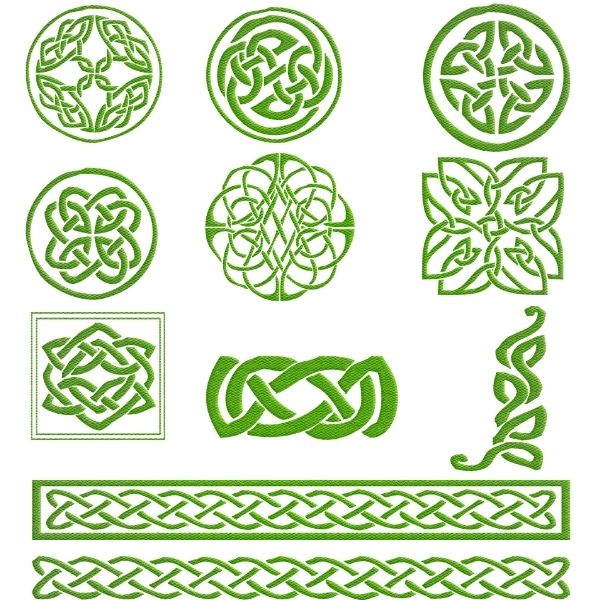No products in the cart.
What are the Different Celtic Knots?

Knotwork, or Interlace, is an ancient form of art created by weaving and looping lines over and around each other. Although not a Celtic creation, interlace was introduced to the Celts by the sixth century CE, and they incorporated the form into their own art to create the distinctive Celtic knots that are so popular today. Visit any area influenced by the Celts, and you will see Celtic knots decorating buildings, monuments, and ancient manuscripts.
Though it may seem that there is an infinite number of Celtic knots, there are actually only eight basic motifs, which are modified to create more intricate patterns. Look carefully at an elaborate Celtic knot, and you might be able to pick out the main pattern from which the knot is formed. Below are six popular knots based on these patterns, and their associated meanings.
Trinity Knot (Triquetra)
Arguably one of the oldest and most recognizable Celtic knot, though its origins predate Celtic usage. Celtic depictions of the Triquetra date back at least to the seventh century CE, adorning manuscripts, crosses, and burial slabs. It is a simple knot composed of three elongated ovals intertwined. Some variations have a circle linking the three ovals. Modern pagans believe the Triquetra represents triple deities such as the Morrigan or Lugh, while Christians believe it represents the Holy Trinity.
Solomon’s Knot
The Solomon’s knot is another ancient motif found in various parts of the world touched by the Roman empire. Solomon’s knot is quite simple: two loops that are double-linked. Additional loops can be added to create more complex forms. In Celtic culture, this motif is believed to represent the union of man and the divine.
Celtic Shield
In its oldest form, a Celtic Shield knot is simply a looped square. Some forms of the knot also include a circle linked through the four loops. Whether the individual motif is simple or complex, the defining feature of this Celtic knot is its four corners. It is believed to have been a symbol for protection — worn by warriors to protect them in battle and placed near the ill to protect them from spirits.
Celtic Love Knot
This motif is also known as the Celtic Heart Knot and is a relatively modern knot believed to have originated in Scotland. Stylized interlocking hearts represent the love between two people, and are said to have been exchanged between lovers as a symbol of betrothal. This could be a perfect knot for a modern handfasting (a wedding ritual in which the couple’s hands are tied together to symbolize their union).
Dara Knot
The name of the Dara knot is derived from the Celtic word “doire” (“oak grove”). This modern variation of an infinity knot is designed to evoke the root system of an oak tree, which was sacred to the Celts. This Celtic knot represents the stability of a well-established root system. Like an ancient oak, this motif symbolizes strength, longevity, and wisdom — a perfect symbol for lovers of the forest or for those who need grounding in their lives.
Celtic Sailor’s Knot
Even in today’s fast-paced world of cruise liners and jet planes, sailors often spend months away from their families. But sailors of the past had no telephones or computers for communication. Some think that sailors would intertwine two ropes together to remind them of their loved ones back home. As such, the Celtic Sailor’s knot is often identified with friendship, harmony, and love.
These are some of the Celtic knots that you might find decorating grand monuments, gracing ancient manuscripts, or even in a modern Celtic knot jewelry store. Whether a simple triquetra or an intricate dara knot, Celtic knots have a special place in Celtic culture.















Leave a Reply